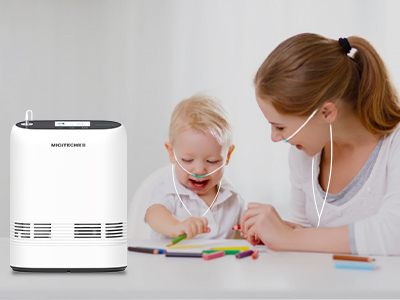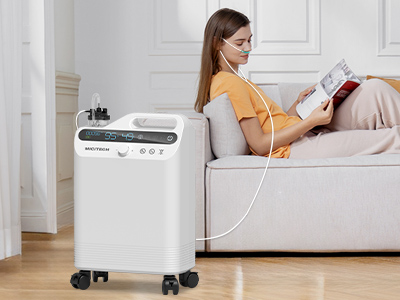27 Sep 2024
For individuals requiring oxygen therapy, traveling can present a unique set of challenges. However, the desire to explore new destinations, spend time with loved ones, or simply take a break from the everyday routine remains as strong as ever. With thoughtful preparation and the right mindset, individuals with oxygen needs can confidently embark on holiday adventures. Knowing what to expect and how to manage your oxygen supply during travel is key to ensuring a safe and enjoyable trip.

Pre-Trip Planning and Consultations
The journey begins long before you pack your bags. A crucial first step is to consult your healthcare provider. Inform your doctor about your travel plans so they can assess whether you are fit to travel and provide any additional advice. In some cases, adjusting your oxygen flow rate might be necessary, especially if you’re flying or visiting higher altitudes.
It’s also important to get the proper documentation. Ask your doctor for a signed letter detailing your need for oxygen therapy, your oxygen flow rate, and other relevant medical information. This document will be essential when dealing with airlines or hotel accommodations. You should also have copies of your oxygen prescription handy in case of an emergency.
Choosing the Right Oxygen Equipment for Travel
Choosing the appropriate oxygen equipment is critical. There are two main options: portable oxygen concentrators (POCs) and oxygen tanks. Portable oxygen concentrators are often preferred for travel due to their convenience and ability to pull oxygen from the surrounding air. However, make sure that your POC is approved by airlines, as not all models meet the necessary requirements.
If you’re using oxygen tanks, plan carefully to ensure you have enough supply for the duration of your trip. Oxygen tanks are bulkier but may be necessary for certain oxygen users. Regardless of the equipment you choose, check the battery life, carry extra batteries, and make sure you have access to electrical outlets when needed to recharge.

Traveling by Air with Oxygen Therapy
Flying presents one of the most complex challenges for oxygen users due to stringent airline regulations. Most airlines require passengers to notify them in advance about their oxygen needs—typically at least 48 hours before the flight. Ensure your portable oxygen concentrator is FAA-approved, as this is mandatory for most airlines.
When packing, consider the logistics of getting through security with your oxygen equipment. Arrive early and be prepared for your equipment to be inspected. Some airlines offer in-flight oxygen for an additional fee, but it’s crucial to confirm this beforehand. Carrying spare batteries, as most flights demand a certain number of backup hours, ensures you won’t run out of power mid-flight.
Traveling by Car or Train with Oxygen
If you plan on hitting the road, traveling by car or train with oxygen is much simpler but still requires adequate preparation. Make sure your oxygen tanks or POC are secured safely during the journey to avoid any accidents. Plan ahead by mapping out rest stops where you can recharge your equipment if necessary.
For longer trips, consider potential delays, traffic, or changes in your route. Always have extra oxygen on hand and know where you can access refills along the way. With proper planning, you can enjoy the freedom of a road trip without the anxiety of running out of oxygen.
Staying in Hotels and Accommodations
Finding the right place to stay while on holiday is key to your comfort and peace of mind. When booking your accommodations, inform the hotel or rental property about your need for oxygen therapy. Some hotels may offer rooms specifically designed for medical needs, providing ample electrical outlets and space for medical devices.
Ensure that your room has convenient access to power for charging your oxygen concentrator or running any other equipment. It's also a good idea to stay on lower floors or request a room with easy elevator access in case of an emergency. This small step can make a big difference in your comfort during your stay.
Exploring Tourist Destinations
Once you’ve reached your destination, it’s time to explore. However, it’s essential to balance your enthusiasm with your energy levels. Overexerting yourself can lead to complications, so be mindful of taking breaks. Rest often, and hydrate regularly, especially in warm climates.
Research the accessibility of the tourist spots you plan to visit. Some destinations may offer oxygen-friendly environments, such as attractions with designated medical assistance areas or easy transportation options. Prioritize destinations that are accommodating to those with mobility or oxygen requirements to make the most of your trip.
Emergency Preparedness While Traveling
While you hope for smooth travels, it’s important to be prepared for the unexpected. Always have a backup plan for your oxygen supply. This might include carrying extra tanks, portable oxygen concentrator batteries, or knowing where you can get emergency refills.
Identify the nearest healthcare facilities and have a list of local emergency contacts, including medical providers or oxygen suppliers, at your destination. If you are traveling internationally, check if your travel insurance covers medical emergencies related to oxygen therapy. Being prepared helps mitigate any potential disruptions to your trip and ensures peace of mind throughout your journey.
Conclusion
With careful planning, individuals who rely on oxygen therapy can still experience the joys of travel. Whether by air, car, or train, knowing the specific steps needed to manage oxygen equipment and prioritize your health will ensure that holidays are spent making memories, not worrying about logistics. A little extra effort on the front end guarantees that your adventure is smooth, enjoyable, and enriching.
Keywords: oxygen
Originally published 27 Sep 2024, updated 27 Sep 2024.